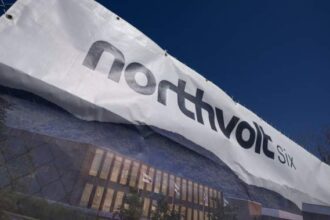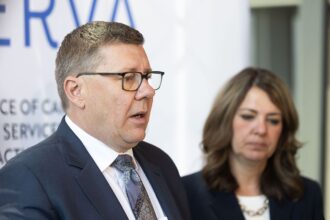In a bold assertion of northern priorities, territorial leaders are pressing the federal government to transform its approach to Arctic sovereignty through substantial infrastructure investments rather than symbolic gestures. As global interest in the resource-rich Arctic intensifies, the conversation has shifted from flag-planting ceremonies to the urgent need for roads, ports, and communication networks that would cement Canada’s presence in its northern territories.
“The days of sovereignty being defined by occasional military exercises and political photo-ops are behind us,” said Northwest Territories Premier Caroline Cochrane during yesterday’s territorial council meeting in Yellowknife. “True Arctic sovereignty means communities with reliable infrastructure, sustainable economies, and residents who can afford to live there.”
The territorial leaders’ unified position comes amid growing international competition for Arctic resources and shipping routes. Russia has dramatically expanded its northern infrastructure, while China has declared itself a “near-Arctic state” despite having no territorial claims in the region. These developments have created a new urgency for Canada’s northern strategy.
According to a comprehensive report released by the Arctic Council, Canada lags significantly behind other circumpolar nations in critical infrastructure development. The report highlights that Russia has built or refurbished 16 deepwater ports along its northern coast, while Canada operates just one seasonal port with limited capacity in the entire Canadian Arctic.
Yukon Premier Ranj Pillai emphasized that world affairs increasingly pivot around Arctic resources and sovereignty. “When other nations see vast territories with minimal development and sparse population, they question the legitimacy of our claims,” Pillai said. “Permanent infrastructure and thriving communities are the most powerful statements of sovereignty we can make.”
The northern leaders have presented Ottawa with a prioritized list of major projects, including the Mackenzie Valley Highway, an Arctic deepwater port at Grays Bay, and expanded broadband infrastructure throughout the territories. These projects would serve multiple purposes, supporting resource development, reducing the cost of living for northern residents, and establishing a permanent Canadian presence across the Arctic.
Economic analyses suggest these investments could generate substantial returns while strengthening Canada’s geopolitical position. A report from the Conference Board of Canada estimates that every dollar invested in northern infrastructure could generate up to $3.50 in economic activity while creating thousands of permanent jobs.
“This isn’t simply about building roads or ports,” explained Nunavut Premier P.J. Akeeagok. “It’s about creating the conditions where Northerners can afford to remain in their communities and where traditional ways of life can coexist with modern economic opportunities.”
The federal government has acknowledged the proposal but has yet to commit to specific funding levels. Sources within the Prime Minister’s Office indicated that while there is support for increased northern development, fiscal constraints may limit the scope and timeline for implementation.
Northern indigenous leaders have also weighed in, emphasizing that any major development must respect land claims agreements and involve Indigenous communities from the planning stages. “Development without Indigenous partnership isn’t development at all—it’s colonization with a new name,” said Natan Obed, president of Inuit Tapiriit Kanatami.
As Arctic ice continues to recede at unprecedented rates, opening new shipping routes and resource opportunities, the question remains: will Canada invest in its North before other nations establish their presence in what has traditionally been Canadian territory? The answer may determine the future of Canadian sovereignty in a rapidly changing Arctic landscape.







